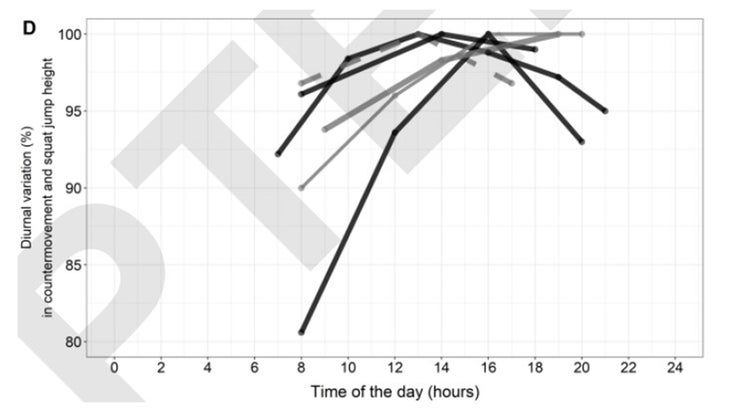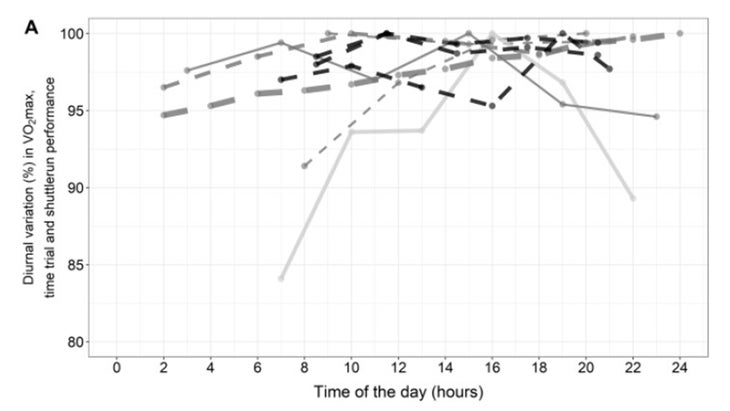No products in the cart.
Outdoor Adventure
Why Sprinters Peak in the Evening and Marathoners Don’t
Most track and field world records are set in the evening; most road running world records are set in the morning. This is not a deep physiological riddle—it’s just a reflection of when big track meets and road races are held. For mass-participation endurance events, in particular, early start times are largely dictated by the need to close streets and the desire to avoid hot weather, not by when the human body is primed for maximal performance.
Still, even when the usual logistical constraints were tossed out for Eliud Kipchoge’s sub-two-hour marathon attempts, they still opted for early morning starts. Was that a mistake, or at least a missed opportunity? The answer, according to a new review in Medicine & Science in Sports & Exercise by researchers at Harvard Medical School and the University of Basel, isn’t as clear as you’d think.
The conventional wisdom about circadian rhythms and physical performance is that you’re at your best in the late afternoon or early evening, with a typical peak time within a few hours of 6 P.M. The usual explanation is that this is when your body temperature is highest, having typically risen by close to two degrees Fahrenheit from its early morning nadir. A warmer body means looser muscles, faster metabolic reactions, and faster transmission of nerve signals. Among the indirect lines of evidence for this effect: when researchers in the consistently balmy climes of Guadeloupe tried to replicate these results, they found no influence of time of day on muscle power—presumably because the subjects were warm all the time.
But there are lots of caveats and additional factors to consider. Is it your body clock itself that peaks at a certain time, or is it a function of how long you’ve been awake or when you last ate? Several studies have shown that if you shift your sleep-wake cycle by a few hours, you also shift the timing of your peak performance by a few hours, suggesting that the external rhythms of daily life matter. Then there’s the matter of individual variation: it seems unlikely that early birds and night owls would be peaking at the same time.
All of these potential confounders are why Harvard’s Raphael Knaier and his colleagues decided to pool as much data as they could into one big meta-analysis. They ended up with a total of 63 relevant articles, but inconsistencies in what was tested and how the data was presented meant they could only combine 29 of the studies in their meta-analysis. They divided those studies into four categories: jump height, anaerobic power (tested in a 30-second cycling sprint), handgrip strength, and endurance exercise (tested in a time trial, shuttle run, or VO2 max test).
The results for the first three were more or less as expected: “strong evidence” that jump height and anaerobic power peak sometime between 1 P.M. and 7 P.M., and “some evidence” that handgrip strength peaks between 1 P.M. and 9 P.M. For example, here’s the data for jump height from various studies. Solid lines indicate a statistically significant effect of time of day, while dashed lines indicate a non-significant effect; thicker lines indicate studies with larger sample size; and darker lines indicate studies with lower risk of bias in the design and analysis.

While there’s some scatter, the pattern of better results in late afternoon is very pronounced, with a lot of thick, dark, non-dashed lines. In comparison, check out the results for tests of endurance:

Most of these studies fail to find any significant difference. To be fair, it’s harder to recruit people to run a series of 5Ks than it is to get them to do a bunch of jumps—but even if the lack of statistical significance is a consequence of small sample sizes, the actual size of any difference also looks small to non-existent compared to those seen for jump height and other parameters. Interestingly, endurance is the one test category where you might expect a higher core temperature to be a hindrance rather than a help, since overheating is a limiting factor during sustained exercise.
Even a meta-analysis like this can’t tell us much about the reasons for time-of-day differences—whether it’s mostly about body temperature, time awake, daylight, or other factors. One point Knaier and his colleagues make in their discussion is that future studies need to do better at reporting individual results and individual differences, rather than just overall averages. In the end, the goal is to find ways of shifting the time of peak performance or minimize the effects of time of day, but that’s mostly guesswork until you figure out what really causes the effect.
There is one conclusion we can make: despite the general trend of late-afternoon peak performance, Eliud Kipchoge’s decision to go for sub-two first thing in the morning doesn’t look like a mistake. When I asked the Breaking2 scientists why they’d made that decision, they were focused on the balance between the theoretical advantage of a steadily dropping evening temperature and the practical disadvantage of having to figure out what to eat all day before a marathon. The meta-analysis suggests that those are the right factors to think about, because for endurance, circadian rhythms don’t seem to matter that much after all.
For more Sweat Science, join me on Twitter and Facebook, sign up for the email newsletter, and check out my bookEndure: Mind, Body, and the Curiously Elastic Limits of Human Performance.

